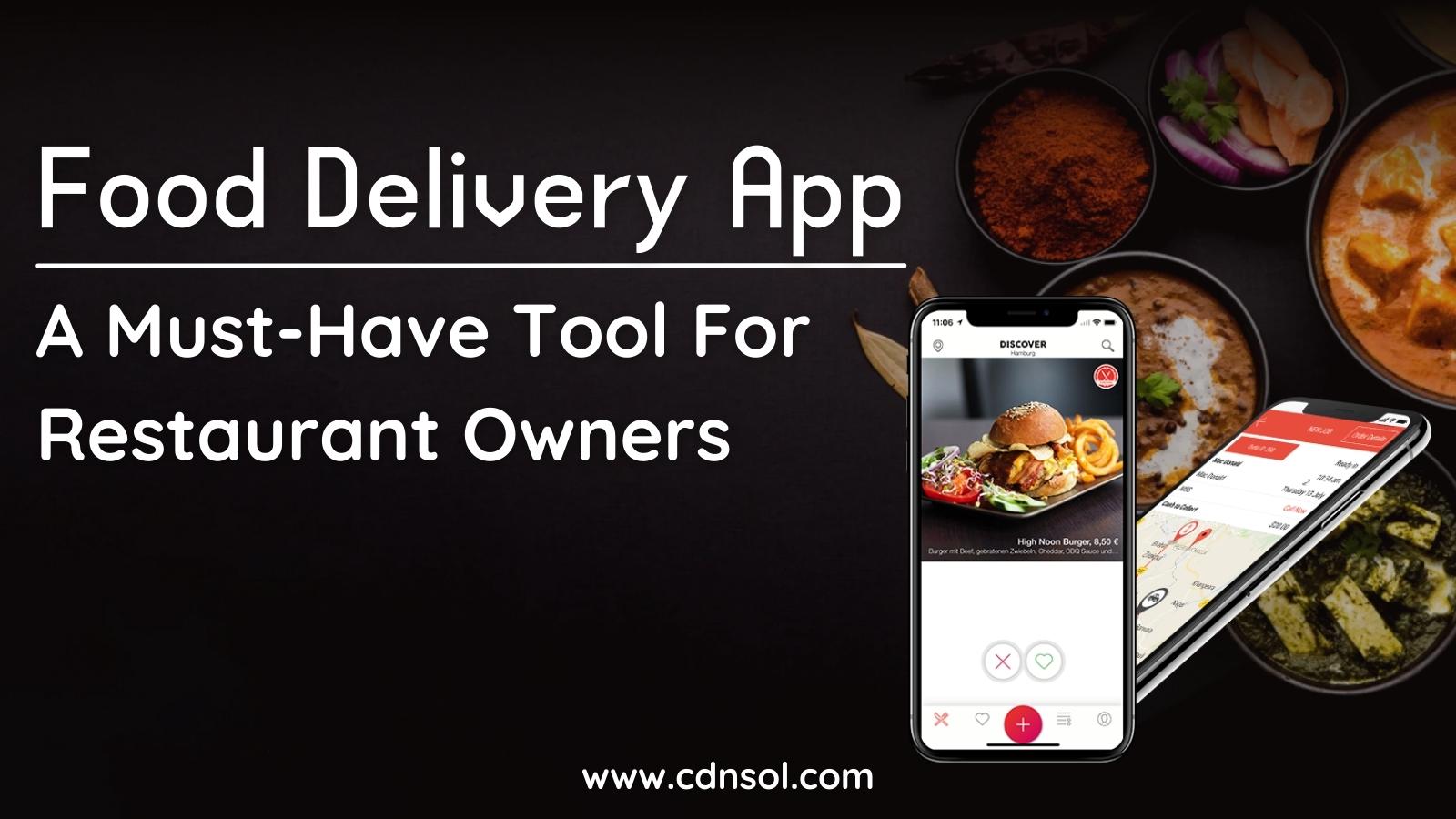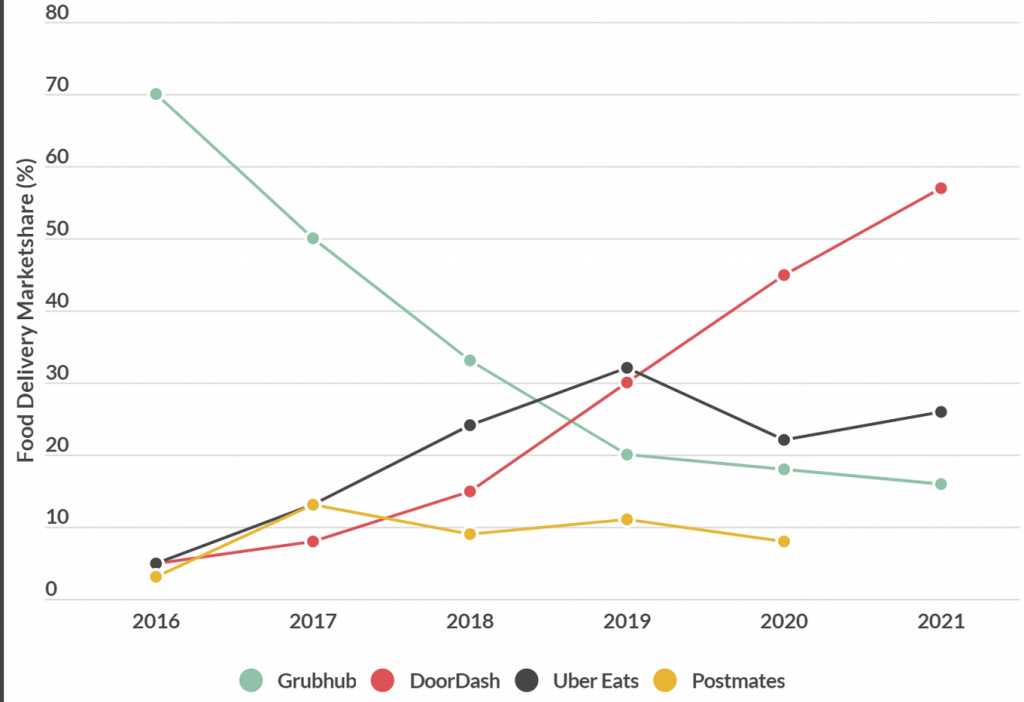Every industry is now being transformed by the penetration of the web and mobile phones around the world. With regards to the most established industry in the world, i.e. food, and refreshments, mobile apps have managed to transfer how restaurant owners deal with their eateries, and how connoisseurs are served.
Foodies crave comfort and convenience; they like saving their time and energy while challenging for needs. This need for food makes food delivery apps come into existence. Online food delivery includes services that can arrange dinners and food orders for direct consumption. It saves time and all the while allows them to browse an assortment of cafés, eateries, and restaurants. If you are a restaurant owner and want to develop an online platform for food delivery then this blog will surely be going to help you. Keep on reading to understand the app development process, app benefits, pricing, and much more…
Table of Contents
Why Restaurant Owners Should Invest in Food Delivery App Development?
Nobody can deny the fact that smartphones have increased the hunger of metropolitan people. Cell phone users all over the world are known to look at nearby cafés and check menus with the help of their smartphone applications before making a beeline for an eatery.
As per a study, over 80% of smartphone users check menus online before eating out, and 94% of cell phone users look at nearby cafés before table booking or online food ordering.
Restaurant owners are intensely spending on online food delivery applications. Not just enhancing client base is inspiring eatery owners, however, the effect of mobile application is one of the determining elements. The effect is delineated as increased spending and an ascent in sales upliftment throughout the long years.
An online food delivery application can guarantee extraordinary advantages for your café and restaurant business. Regardless of whether you are a high-end café, an independent QSR, or only take away homegrown eatery, you can use online food delivery applications for your business reach. With a food delivery application, you can:
- Improve your local reach
- Enhance customer experience
- Develop a profitable sales channel
- Optimize operations
- Branding opportunities
- Offer 24*7 support
- Increase customer base
Types Of Mobile Apps For Restaurants And Hotels
CDN Solutions Group has developed n number of food apps for restaurant and hotel owners. All the apps are specifically designed to fulfill the requirement of our clients. Below are a few examples of food delivery and restaurant apps that we can offer you:
- Food Delivery App
- Restaurant finder apps
- Restaurant menu apps
- Particular restaurant/ hotel app
- QR Code Payment App
- Tiffin center apps
- Inventory Management Software/ app
- Online Ordering Platform
- Accounting Software/app
- Scheduling Software
- Restaurant Management Software/app
- Loyalty Program Software
- Restaurant Review App
- Employee Training Software/Hospitality LMS
- Payroll Software
- Dietician apps
Features You Can Include In Your Restaurant Apps
You can add as many features as required for your business. We have created a rundown of tentative features to enhance your food delivery and restaurant apps:
- User profile creation
- Restaurant listing
- Easy payment gateway integration
- Easy Menu Access,
- Notifications
- Location-Based Deals,
- Loyalty And Referral Programs,
- Easier Internal Order Fulfilment,
- Table booking,
- Increased Sales Amongst Millennials,
- Better On-Site Service,
- Social Sharing,
- Image gallery for restaurant images,
- Reviews and feedback,
- Higher Coupon Redemption,
- Better ROI On Special Offer,
- Click To Call,
- Referrals options.
What Are The Current Market Segment for Online Food Delivery
The online services market sector for online food delivery comprises of the client and the income generated of two distinct delivery services solutions for cooked food:
- Restaurant-to-Consumer delivery
- Platform-to-Consumer delivery
Restaurant-To-Consumer Delivery – the delivery of food completed straight by the cafés, restaurants requested through platforms (for example delivery hero) or an eatery site (for example Domino’s, pizza hut), and
Platform-to-Consumer Delivery- It emphasizes online delivery services that furnish clients with food from eateries that don’t bring to the table for food delivery themselves. For this situation, the platform (for example Deliveroo, Swiggy) handles the delivery process. The acquired income incorporates the gross merchandise value (GMV) – the absolute sales value for stock/food sold through the internet-based food delivery commercial place.
Scope Of Food Delivery App Development
The online food delivery market is reliably growing over the world and coming years. Because of the high demand of individuals to arrange food online in the Covid-19 pandemic, the food delivery apps have been revolutionized. Then, at that point, creating an online food delivery application for your food business whether it’s a small café, restaurant or home cook tiffin center is an amazing opportunity.
The Food delivery app users in the US are growing rapidly in the past 5 years. Let’s understand it by one survey report of McKinsey in which it shows the market share of various food delivery apps:
In the figure below you can see the growth of food delivery app users in the US in the past 5 years:
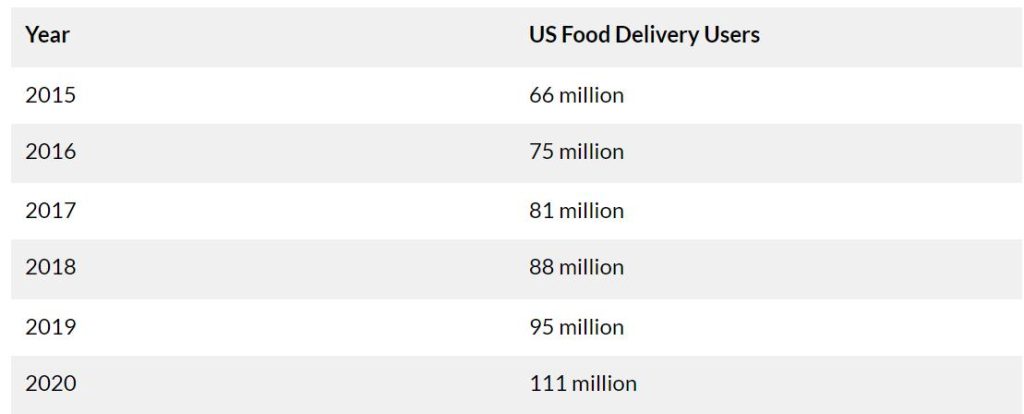
Worldwide Food Delivery App Market Analysis
In contrast with other online-based markets, food delivery has simply come to shape in the last five years. The platform-to-consumer model depends on an adequate number of clients, cafés, and riders to satisfy a city, and without one of the three, it battles to work, as can be found in small communities where there aren’t an adequate number of riders.
Uber Eats, using its worldwide ridesharing platform, has had the option to extend its platform to-customer business rapidly. Just Eat Takeaway and Delivery Hero have amassed food delivery domains, through a developing rundown of auxiliaries.
Deliveroo and DoorDash can create sizeable income through home market sectors, because of the huge size of the UK and US food delivery market.
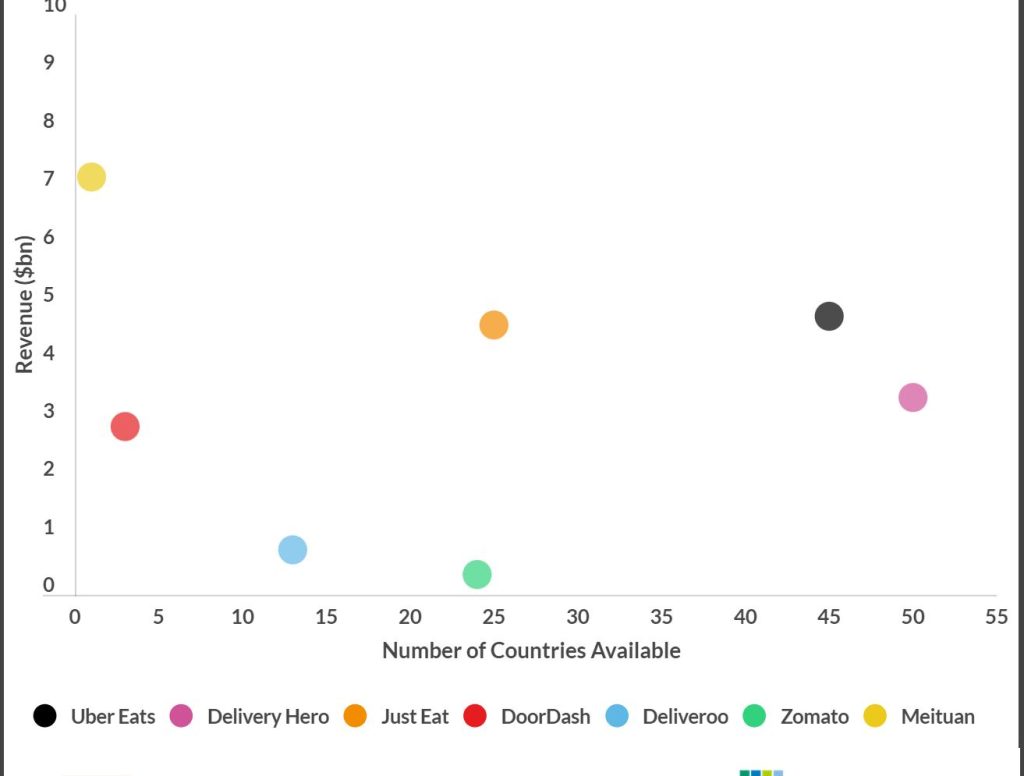
We expect that the next five years should be loaded up with more worldwide solidification, albeit a few business sectors (India, South Korea) have evaded the pattern and replaced global services, like Uber Eats and Delivery Hero, with local applications.
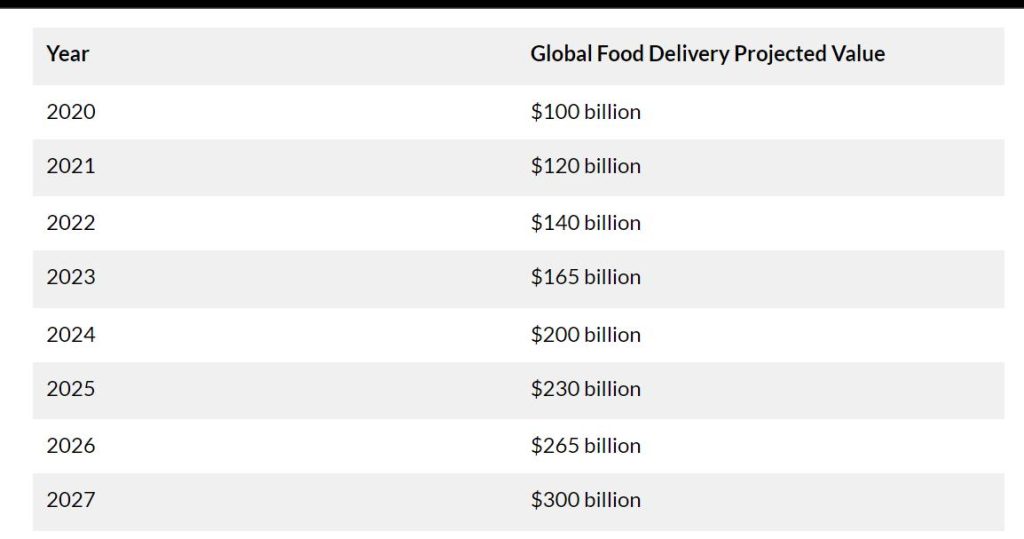
General Tech-Stack To Develop Modern Food Delivery Apps
The best tech stack for food delivery application development is a significant part of creating an application be it for the web application or mobile application. It is essentially the emotionally supportive network for application development and is a mix of different top programming dialects, software, tool, etc.
Continuing, the best tech stack for mobile online food delivery applications is generally divided into the following points:
Frontend Development:
- JavaScript
- HyperText Markup Language
- Web Assembly
- Cascading Style Sheets
Backend Development:
- frameworks
- programming dialects
- DBMS
- Web servers
- Local development environment
- Microservice platforms
- Collaborative services
- Website performance testers,
Wrapping Up
Mobile technologies advances influence all parts of our lives and all types of industries also. The eatery/restaurant business isn’t abandoned. Indeed, it’s among those where the effect of mobile or smartphones has become ubiquitous.
Making loyalty programs, carrying out unique POS frameworks, and empowering consumers to take part in programs is fundamental if you need your restaurant to be in positioned the market and beat contenders. As one of the top mobile application development companies, we can give your business an engaging application that surpasses client expectations and helps you to grow more.
To know more about us visit: CDN Solutions Group

